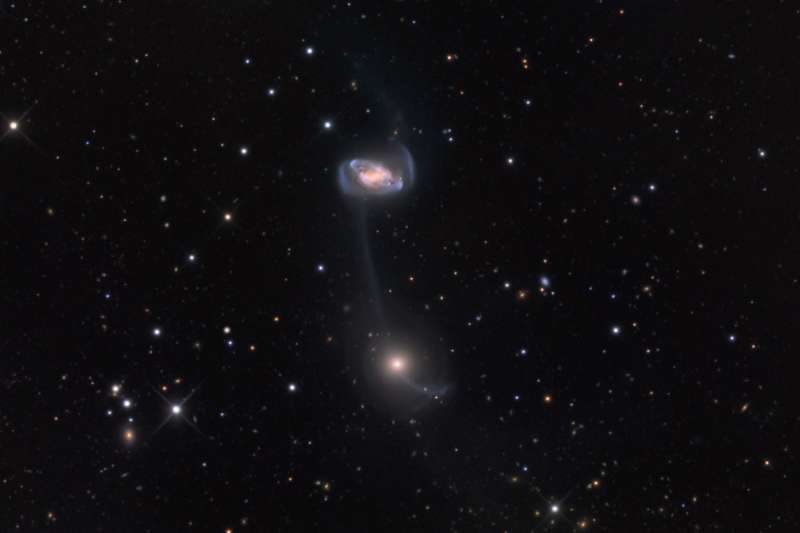
|
Explanation: Galaxies NGC 5216 (top) and NGC 5218 really do look like they are connected by a string. Of course, that string is a cosmic trail of gas, dust, and stars about 22,000 light-years long. Also known as Keenan's system (for its discoverer) and Arp 104, the interacting galaxy pair is some 17 million light-years away in the constellation Ursa Major. The debris trail that joins them, along with NGC 5218's comma-shaped extension and the distorted arms of NGC 5216, are a consequence of mutual gravitational tides. The tides disrupt the galaxies as they repeatedly swing close to one another. Drawn out over billions of years, the encounters will likely result in their merger into a single galaxy of stars. Such spectacular galactic mergers are now understood to be a normal part of the evolution of galaxies, including our own Milky Way.
|
January February March April May June July August September October November December |
| ||||||||||||||||||||||||||||||||||||||||||||||||
NASA Web Site Statements, Warnings, and Disclaimers
NASA Official: Jay Norris. Specific rights apply.
A service of: LHEA at NASA / GSFC
& Michigan Tech. U.
Based on Astronomy Picture
Of the Day
Publications with keywords: interacting galaxies
Publications with words: interacting galaxies
See also:
- APOD: 2025 August 19 B Giant Galaxies in Pavo
- APOD: 2025 June 1 B UGC 1810: Wildly Interacting Galaxy from Hubble
- APOD: 2025 March 12 B NGC 772: The Fiddlehead Galaxy
- Peculiar Galaxies of Arp 273
- APOD: 2025 January 6 B Colliding Spiral Galaxies from Webb and Hubble
- Shell Galaxies in Pisces
- APOD: 2024 July 15 B The Tadpole Galaxy from Hubble
